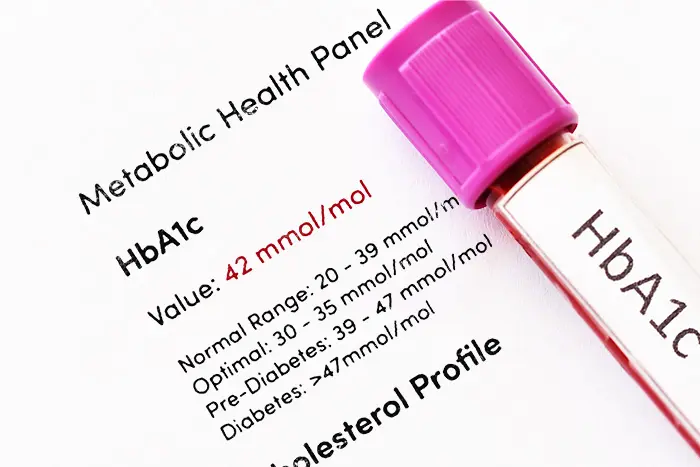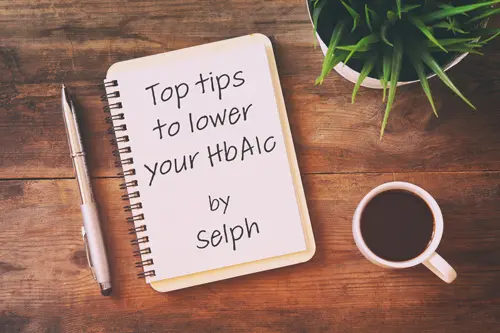When is the best time to do a HbA1c test? When to measure your Hemoglobin A1c Levels
Published
Key Article Takeaways
- It’s best to check your HbA1c level when it’s stable, after a few months of consistent lifestyle habits or medication.
- You should check your HbA1c every few years before the age of 40 and yearly after that.
- If you have diabetes or pre-diabetes, you’ll need to check your HbA1c more frequently.
- You can quickly and easily check your HbA1c with Selph.
The best time to check your HbA1c levels is when they’re stable. This is typically after a few months of consistent lifestyle habits, such as:
- A balanced diet
- Regular exercise
- Steady medication use (if applicable)
Testing during a stable period accurately reflects your average blood sugar control over the past 2-3 months.
Even with the normal range, we know that a lower HbA1c is associated with better health and reduces your risk of conditions such as heart disease and cancer. Not sure what the normal range looks like? You can read more about HbA1c ranges in our in-depth article.
When are HbA1c levels stable?
For most people, HbA1c levels are stable when there haven’t been any major changes to lifestyle or medications affecting blood sugar levels. Unlike day-to-day blood sugar readings, HbA1c isn’t affected by the time of day or what you’ve recently eaten.
However, several factors can impact your overall glucose and HbA1c levels, such as:
- Recent illness
- Significant weight change
- Starting new medication
- Changes to your diet & exercise regime
For HbA1c to accurately reflect your current regime, it’s best to test after at least a couple of months of consistency.
How often should I test my HbA1c level?
How often you check your HbA1c level depends on factors like your age, whether you’re at risk of having or have diabetes and whether you’re making changes with the aim of improving your sugar handling.
All other things being equal, your sugar-handling tends to get worse with age and so your HbA1c will generally go up. It would be sensible to check your HbA1c every few years from your 20s and 30s. Once you’re in your 40s, you should really be checking your HbA1c at least every year. Of course, if you check your HbA1c and it’s not in the normal range, you would almost certainly want to make some changes and then repeat the HbA1c test in a few months.
If you’ve been diagnosed with diabetes, your HbA1c should typically be tested every 3 to 6 months. For those with prediabetes - indicating high risk of going on to develop diabetes - testing once or twice a year should be sufficient.
Regular testing helps you understand how well your current treatment or lifestyle plan works and when changes are needed.
What is Time in Range (TIR)?
Time in Range (TIR) refers to the percentage of time your blood sugar remains within a healthy target range.
A healthy target range will depend on the individual. If you don’t have diabetes, you should be aiming to keep your blood sugar between 3 and 7.2mmol/L at all times. However, if you have type 2 diabetes, you might have a different target range, aiming to keep blood glucose between about 4 and 10mmol/L after meals.
While HbA1c gives an average, TIR offers more immediate insight into how your blood sugar fluctuates throughout the day. The ideal TIR for patients with type 1 or type 2 diabetes is greater than 70%, with variations in goals for elderly and pregnant people1.
TIR is typically calculated by continuous glucose monitoring (CGM) devices. These devices track your glucose levels throughout the day and can show fluctuations. TIR is helpful because it can identify patterns and help guide you to potential causes of highs and lows. It can also help your doctor make lifestyle recommendations and treatment decisions.
What is the difference between TIR and HbA1c?
The main difference between TIR and HbA1c is in the time frame and focus. HbA1c reflects your average blood sugar level over the last few months, whereas TIR looks at your short-term, day-to-day control.
While HbA1c is valuable for spotting long-term trends, TIR gives more immediate feedback. So, HbA1c can help you and your doctor make changes to your medication and lifestyle, whereas TIR helps you with day-to-day changes.
When do you need to test HbA1c?
Everyone should check their HbA1c every few years before the age of 40 and yearly after that. However, there are also some specific times you should consider checking your HbA1c.
You should consider getting a HbA1c test if you experience symptoms that could suggest high blood sugar, such as:
- Excessive thirst
- Frequent urination
- Blurred vision
- Unexplained weight loss or extreme hunger
- Fatigue
- Slow-healing cuts or wounds
It is also worth testing your HbA1c if you have risk factors for poor metabolic health like being overweight, a sedentary lifestyle or a family history of diabetes.
Can I get my HbA1c level checked by my GP on the NHS?
Yes, you can have your HbA1c tested through your GP on the NHS, particularly if you’re showing symptoms of high blood sugar or fall into a higher-risk category. However, testing is only offered when clinically indicated. GP waiting times can also vary depending on your practice and local NHS resources.
If you’d rather not wait or want to to check your HbA1c as part of a general health screen, you can order a private HbA1c test kit from Selph.
How can I optimise my HbA1c level and reduce diabetes risk?
There are a number of lifestyle factors that can help improve your HbA1c level and reduce your risk of developing type 2 diabetes, including changes to diet, exercise, stress, sleep, and more. Here are 7 science-backed tips to get you started.
Get tips on better health
Sign up to our emails on the better way to better health.
We'll keep you up-to-date with the latest research, expert articles and new ways to get more years of better health.







